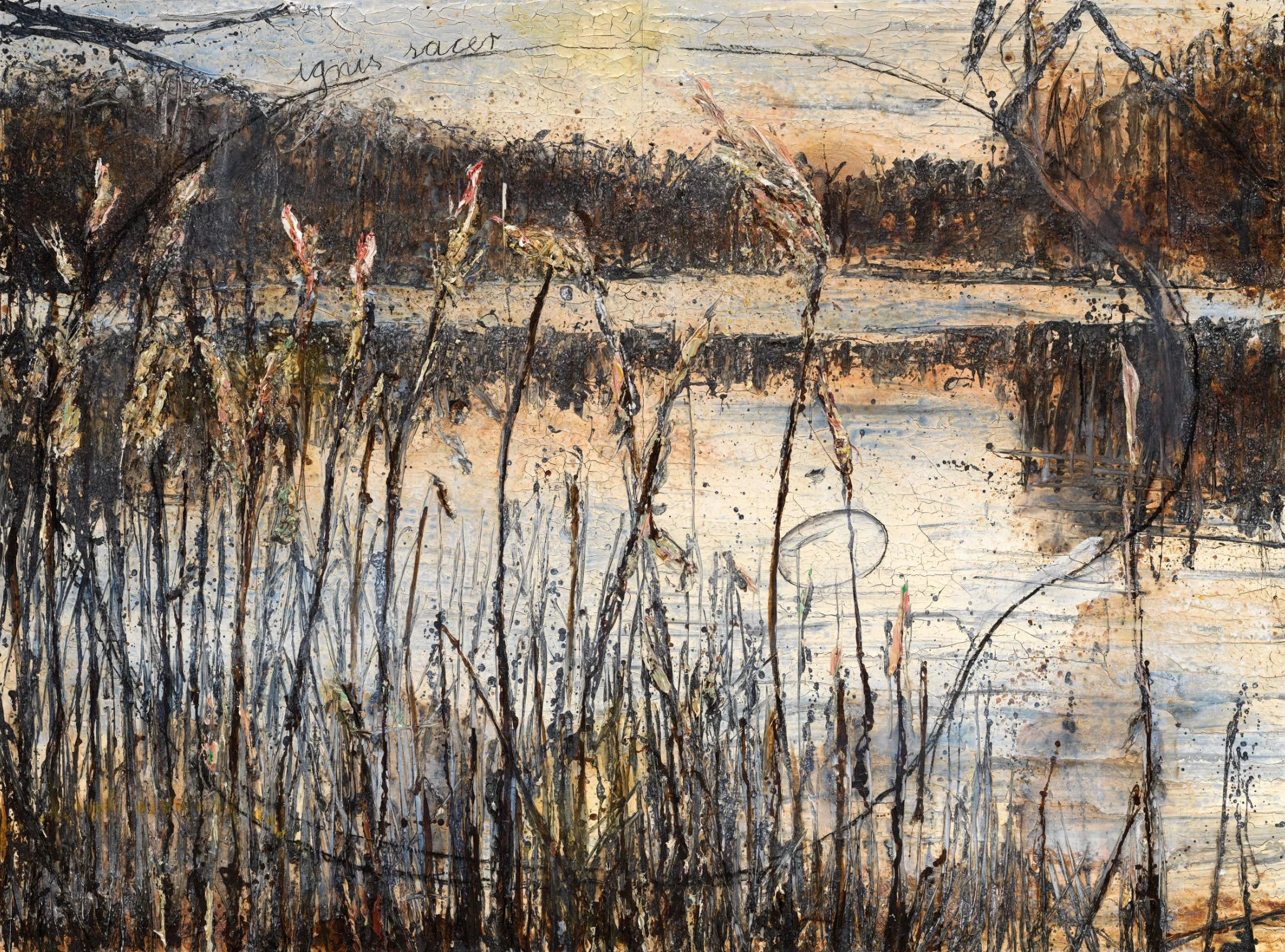
ANSELM KIEFER (Donaueschingen, Germany, 1945) is one of the most significant postwar artists, whose monumental works explore themes of history, memory, mythology, and the sacred. Born during the closing months of World War II, Kiefer confronts Germany’s fraught past, grappling with national identity and the legacy of the Third Reich. His art draws from an expansive cultural and philosophical wellspring, incorporating references to the Old and New Testaments, Kabbalistic mysticism, Norse mythology, Wagner’s Ring Cycle, and the poetry of Paul Celan, and Ingeborg Bachmann; the latter also published in this journal.
Kiefer's practice encompasses painting, sculpture, installations, artist books, and works on paper, such as drawings, watercolors, and collaged photographs. His materials, lead, straw, ash, concrete, glass, tree roots, and burned books, are as symbolically charged as they are diverse, evoking themes of destruction, renewal, and transformation. These elements reflect his alchemical approach to artmaking, where the physical and spiritual intertwine, layering collective memory with visceral materiality.
Educated at the School of Fine Arts in Freiburg and the Art Academy in Karlsruhe, Kiefer was influenced early on by Joseph Beuys, whose conceptual and material philosophy resonated with Kiefer’s exploration of history’s sedimented layers. By invoking and restaging controversial imagery, such as his provocative Occupations (1969), Kiefer forces viewers to reckon with collective traumas, particularly the Holocaust, while expanding his inquiry to universal myths of existence and the cosmos.
Kiefer’s international career includes a vast exhibition history, with major retrospectives at institutions such as the Art Institute of Chicago (1987), the Neue Nationalgalerie, Berlin (1991), the Guggenheim Museum Bilbao (2007), and the Royal Academy of Arts, London (2014). Highlights include his groundbreaking installations at Monumenta, Grand Palais, Paris (2007), and the permanent commission Anselm Kiefer au Louvre (2007), marking him as the first living artist since Georges Braque to be honored with such a distinction.
Whether through vast encrusted canvases or monumental sculptural spaces, Kiefer’s work transcends boundaries of medium and scale, embodying a profound meditation on myth, memory, and the cyclical nature of history. His oeuvre stands as both a reckoning and a renewal—an exploration of humanity’s ancestral epics, cultural legacies, and existential questions.





